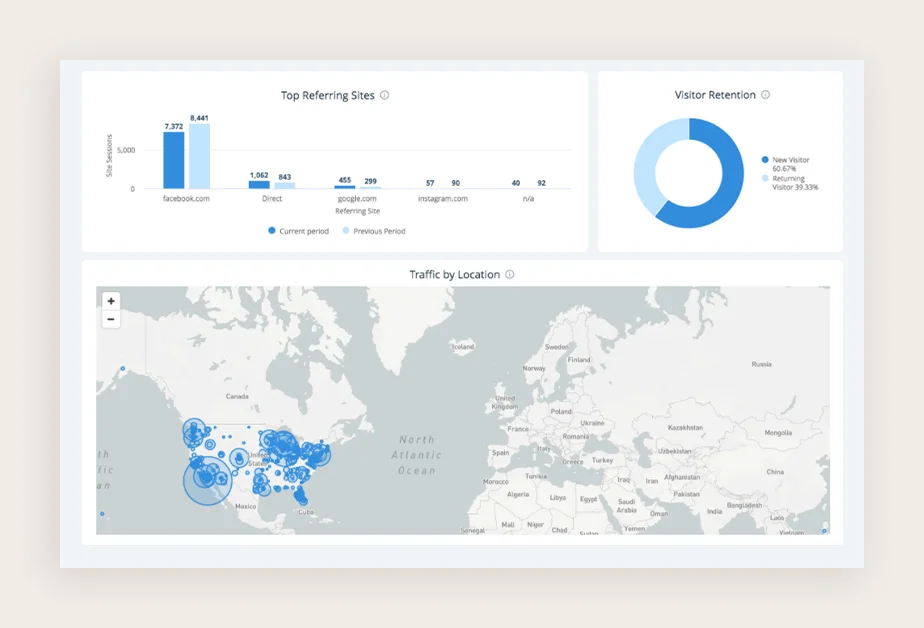
In today's fast-paced and competitive business landscape, marketing plays a crucial role in the success of any small business. With numerous marketing channels and strategies available, it's essential to have a well-crafted marketing plan that provides direction, clarity, and measurable outcomes. In this comprehensive guide, we will walk you through a step-by-step process to create an effective marketing plan tailored specifically for small business owners. By following these strategies and best practices, you'll be equipped to maximize your marketing efforts and achieve your business goals. So, let's dive in and start planning for success!
What is a Marketing Plan? A marketing plan is a strategic document that outlines your business's marketing goals, target audience, key messages, marketing channels, and tactics to reach your objectives. It provides a roadmap for your marketing activities and helps ensure that all efforts are cohesive, targeted, and aligned with your overall business objectives. A well-crafted marketing plan acts as a blueprint for success, allowing you to make informed decisions, track progress, and achieve measurable results.
Step 1: Conduct Market Research and Competitive Analysis Before diving into the specifics of your marketing plan, it's essential to conduct comprehensive market research and competitive analysis. This step will provide valuable insights into your industry, target market, customer preferences, and competitor landscape. Identify market trends, customer behavior patterns, and emerging technologies that could impact your business. Analyze your competitors to understand their strengths, weaknesses, opportunities, and threats (SWOT analysis). This research will help you identify unique opportunities, position your business effectively, and differentiate yourself from the competition.
Step 2: Define Your Target Audience and Create Buyer Personas To effectively market your products or services, you need a deep understanding of your target audience. Define your ideal customer profile and create detailed buyer personas. These personas are fictional representations of your target customers, capturing their demographics, motivations, pain points, and buying behaviors. By understanding your audience on a personal level, you can tailor your marketing messages, channels, and tactics to resonate with their needs and preferences.
Step 3: Set SMART Goals and Key Performance Indicators (KPIs) Establishing clear and measurable goals is vital for your marketing plan's success. Use the SMART framework to set goals that are Specific, Measurable, Attainable, Relevant, and Time-bound. Align your goals with your overall business objectives and break them down into specific marketing objectives. Assign Key Performance Indicators (KPIs) to each objective, enabling you to track progress and measure the success of your marketing initiatives. Examples of KPIs include website traffic, conversions, social media engagement, lead generation, customer acquisition cost, and return on investment (ROI).
Step 4: Develop Your Unique Selling Proposition (USP) A strong Unique Selling Proposition (USP) is critical for differentiating your business from competitors. Identify your unique value proposition and articulate it in a clear, concise, and compelling manner. Your USP should communicate the unique benefits, value, or advantages your business offers to customers. It should answer the question, "Why should customers choose you over competitors?" Crafting a strong USP will help you attract and retain customers by effectively communicating your business's unique value.
Step 5: Choose the Right Marketing Channels and Tactics With your goals, target audience, and USP defined, it's time to select the most effective marketing channels and tactics to reach your audience. Consider both traditional and digital marketing channels, such as social media marketing, content marketing, email marketing, search engine optimization (SEO), paid advertising, public relations, influencer marketing, and offline marketing. Leverage market research and buyer personas to identify the channels your target audience frequents and tailor your messaging and tactics accordingly. Remember that an integrated and multi-channel approach often yields the best results.
Step 6: Develop a Budget and Allocate Resources Marketing requires an investment of both time and financial resources. Determine your marketing budget based on your business's size, industry, and growth goals. Allocate resources across different marketing channels, campaigns, and initiatives. Consider factors like advertising costs, marketing software and tools, content creation, design, and promotional materials. Regularly review and adjust your budget to optimize performance and ensure a positive return on investment.
Step 7: Create a Detailed Marketing Calendar and Implementation Plan A marketing calendar is a crucial tool for organizing and implementing your marketing plan effectively. Map out your marketing activities, campaigns, and initiatives on a monthly, quarterly, or annual basis. Include important dates, holidays, industry events, and product launches to capitalize on relevant opportunities. Break down tasks, assign responsibilities, and set deadlines to ensure smooth execution. Regularly review and update your marketing calendar to adapt to changing market conditions and optimize your strategies.
Step 8: Monitor, Measure, and Analyze Results To gauge the effectiveness of your marketing efforts, it's essential to monitor, measure, and analyze key metrics and data. Utilize analytics tools like Google Analytics, social media insights, and email marketing platforms to track and measure the performance of your marketing campaigns. Analyze metrics such as website traffic, engagement, conversions, customer acquisition cost, and ROI. Regularly review your performance against the set KPIs, identify areas for improvement, and make data-driven adjustments to optimize your marketing strategies.
Step 9: Continuously Refine and Adapt Your Marketing Plan Marketing is an iterative process, and your marketing plan should evolve as your business grows and market dynamics change. Continuously monitor market trends, customer feedback, and competitor activities. Stay up-to-date with emerging technologies and new marketing tactics. Seek opportunities to refine and optimize your marketing strategies based on new insights and data. Regularly review and update your
marketing plan to ensure its relevance and alignment with your business objectives.

Creating a comprehensive marketing plan is crucial for small business owners to drive growth, increase brand awareness, and achieve their business objectives. By following the step-by-step process outlined in this guide, you'll gain the clarity, direction, and focus needed to execute effective marketing campaigns. Remember, a well-crafted marketing plan acts as a roadmap, guiding your marketing efforts towards success. Embrace the power of strategic marketing planning, and watch your small business flourish in today's competitive landscape.
Did you find this article useful? Click here to get in touch with our team so we can help you achieve all your business goals!
